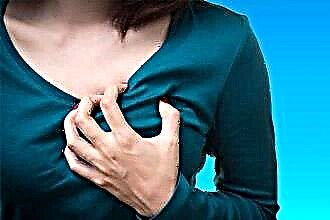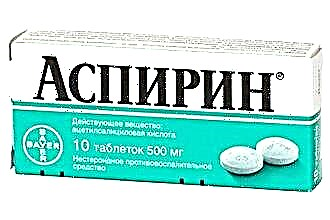Etiology
Factors that provoke the onset of CMF:
heredity;
- sporadic gene mutations;
- viral, bacterial, fungal infections;
- metabolic disorders;
- autoimmune diseases;
- congenital and acquired heart defects;
- tumors of the heart;
- hormonal disruptions;
- exposure to toxins;
- alcohol abuse;
- stress.
Classification and pathogenesis
There are many classifications of cardiomyopathies. The most complete is the clinical classification.
Among cardiomyopathies, there are:
I. Nosological forms:
- dilated;
- hypertrophic (obstructive);
- restrictive;
- arrhythmogenic right ventricular cardiomyopathy;
- inflammatory:
- idiopathic;
- autoimmune;
- post-infectious;
- specific cardiomyopathies:
- ischemic;
- valve;
- hypertensive;
- dismetabolic:
- dyshormonal (thyrotoxicosis, hypothyroidism, adrenal insufficiency, pheochromocytoma, acromegaly, diabetes mellitus);
- hereditary storage diseases (hemochromatosis, glycogenosis, Niemann-Pick disease, etc.);
- electrolyte deficiencies, nutritional disorders, protein deficiency, potassium metabolism disorder, magnesium deficiency, anemia, vitamin B1 and selenium deficiency;
- Amyloidosis;
- Muscular dystrophies;
- Neuromuscular disorders;
- ILC during pregnancy;
- Allergic and toxic (alcoholic, radiation, medicinal).
II. Unclassified cardiomyopathies:
- Fibroelastosis;
- Non-compact myocardium;
- Dilated CMF with minor dilatation;
- Mitochondrial CMF.
Dilated cardiomyopathy (DCM). It is the most common form of cardiomyopathy in adults. 20-30% have a family history of the disease. More common in middle-aged men.
The progression of dystrophic processes in cardiomyocytes leads to dilatation of the heart cavities, a decrease in the ability of the myocardium to contract, a violation of systolic function, and subsequently ends with chronic heart failure. Perhaps the addition of mitral insufficiency, disturbances in blood flow in the coronary arteries, myocardial ischemia, diffuse cardiac fibrosis.
DCM is a disease with multiple etiology. In each patient, it is possible to simultaneously determine several factors provoking the disease, such as exposure to viruses, alcohol intoxication, smoking, autoimmune disorders, changes in hormonal levels, allergies, etc.
Hypertrophic cardiomyopathy (HCM). This is a genetically determined form of the disease with an autosomal dominant mode of inheritance and high penetrance. A gene mutation leads to hypertrophy of myocytes, which are chaotically located in the myocardium. The amount of loose interstitium increases.
The pathogenesis is based on hypertrophy of the myocardial walls of the left (sometimes right) ventricle. The volume of the ventricle does not change or decreases slightly. Hypertrophy is usually asymmetric and involves the interventricular septum. Echocardiography reveals the presence of a systolic pressure gradient in the outflow tract.
Restrictive cardiomyopathy (RCMP). This type is the most rare and involves the endocardium in the pathological process. There is both a primary pathology (endomyocardial fibrosis and Leffler's syndrome) and a secondary variant due to other diseases (amyloidosis, systemic scleroderma, hemochromatosis, toxic myocardial damage).
The pathogenesis of RCMP is based on the accumulation of beta-amyloid, hemosiderin, or eosinophil degranulation products around the vessels in the interstitial tissue. In the future, this leads to fibrosis and destruction of the heart muscle. Rigidity of the myocardial walls causes a violation of diastolic filling of the ventricles, an increase in systemic pressure and pressure in the pulmonary circulation. The systolic function and the thickness of the myocardial walls practically do not change.
Arrhythmogenic right ventricular cardiomyopathy. This type of cardiomyopathy is hereditary (autosomal dominant), although there are cases of no family history described. The first signs of cardiomyopathy appear in childhood and adolescence. It occurs as a result of a gene mutation, the synthesis of structural proteins of the heart tissue is disrupted. The basis of pathogenesis is the gradual displacement of the pancreas myocardium by fibrous and adipose tissue. This leads to an expansion of its cavity and a decrease in contractile function. A pathognomonic diagnostic sign is the formation of an aneurysm of the pancreas.
Clinic and symptoms
The clinical picture is determined by the main triad:
CHF symptom complex;
- The presence of disturbances in the rhythm and conduction of the heart;
- Thromboembolic complications.
In 70-85% of patients with DCM, the first manifestation is progressive CHF.
The main symptoms are:
- shortness of breath on exertion, with time and at rest
- excruciating suffocation at night;
- swelling of the limbs;
- palpitations;
- painful sensations in the right hypochondrium, an increase in the abdomen;
- interruptions in the work of the heart;
- vertigo;
- fainting.
At the HCMP, the following are at the fore:
- dyspnea;
- pressing pains behind the breastbone;
- fainting.
Patients with RCMP complain about:
- palpitations, interruptions in the work of the heart;
- swelling;
- pain in the right hypochondrium.
In case of arrhythmogenic right ventricular CMP, the following come to the fore:
- dizziness attacks;
- frequent fainting;
- interruptions in the work of the heart.
Diagnostics
The most important screening diagnostic method is EchoCG. The main criterion for making a diagnosis is the revealed systolic, diastolic or mixed myocardial dysfunction.
Physical examination notes:
percussion expansion of the borders of the heart in both directions;
- systolic murmur at the apex and under the xiphoid process;
- tachycardia, atrial fibrillation, extrasystole, gallop rhythm;
- signs of left ventricular failure - peripheral edema, ascites, swelling of the jugular veins, enlarged liver;
- signs of pulmonary hypertension - an accent of the II tone over the pulmonary artery, moist fine bubbling rales in the lower parts of the lungs;
Instrumental methods:
On echocardiography, depending on the type of disease, they find:
- DCMP - dilatation of cardiac cavities, decreased contractility, hypokinesia of the posterior wall of the LV, decreased ejection fraction, MV in the form of “fish pharynx”.
- HCM - asymmetric LV hypertrophy (thickness 15 mm and more), pre-systolic movement of the MV, dynamic pressure gradient in the outflow tract.
- RCMP - thickening of the posterior basal wall of the LV, limiting the mobility of the posterior valve of the MV, thickening of the endocardium, thrombus formation in the cavity of the ventricles.
To clarify the diagnosis and differentiation with other diseases, carry out:
- ECG, round-the-clock ECG monitoring - the presence of conduction disturbances, arrhythmias, extrasystole;
- X-ray of the OGK;
- Probing of the cardiac cavities, ventriculography;
- Myocardial biopsy;
- Functional cardiac tests;
- Laboratory examinations - clinical analysis of blood, urine, determination of ALT, AST, creatinine, urea, coagulogram, electrolytes.
Treatment
Measures for the treatment of cardiomyopathy in young children and adults are mainly aimed at improving the general clinical condition, reducing the manifestations of CHF, increasing resistance to physical activity, and qualitatively improving life.
The protocol for managing patients with DCM divides treatment methods into mandatory and optional ones.
Mandatory:
- Etiotropic treatment for secondary CMP:
- surgical elimination of the cause (ischemic, endocrine CMP);
- etiological therapy of inflammatory CMP.
- Prescription of drugs for the correction of systolic heart failure:
- long-term ACE inhibitors;
- beta blockers;
- diuretics;
- cardiac glycosides;
- aldosterone antagonists.
Additional (if indicated):
- Amiodarone for ventricular extrasystoles;
- Dopamine, dobutamine;
- Nitrates;
- Anticoagulants;
- Implantation of a cardioverter-defibrillator;
- Heart transplant.
Patients with HCM are prescribed:
Basic:
- Beta blockers;
- Calcium channel blockers;
- Antiarrhythmic drugs;
- Additionally:
- ACE inhibitors;
- Operative myomectomy;
- implantation of a pacemaker or cardioverter-defibrillator.
For the treatment of RCMP, glucocorticosteroids (prednisolone), cytostatics and immunosuppressants are used. In the case of severe fibrosis, endocardectomy with valve replacement is performed.
Treatment of arrhythmogenic right ventricular CMP is aimed at eliminating and preventing arrhythmias. They use cordarone, beta blockers. If ineffective, implantation of an automatic cardioverter-defibrillator, radiofrequency destruction of the arrhythmogenic zone, installation of an artificial pacemaker. In severe cases, a ventriculotomy is performed.
Quality treatment criteria:
- Reducing the severity of symptoms of heart failure;
- Increased left ventricular ejection fraction;
- Elimination of signs of fluid retention in the body;
- Improving the quality of life;
- Prolongation of intervals between hospitalizations.
Prognosis and further screening of patients
Three-year survival rate in patients with DCM is 40%.
The life expectancy of patients with HCM is somewhat longer, but the annual mortality rate still reaches 4% (up to 6% in children). In 10% of patients, spontaneous regression of the disease is observed. The highest mortality rates in patients with RCMP - mortality in 5 years reaches 70%.
The most favorable outcome is with dyshormonal (including in women during menopause) cardiopathy. Subject to adequate hormonal correction of the underlying disease, dystrophic processes regress.
In general, with the observance of the recommendations, regular intake of drugs, timely surgical intervention and correction of the underlying disease, the quality of life can be significantly improved.
Patients with CMP should be under dispensary supervision, undergo examinations 1 time in 2 months. Mandatory control of ECG, EchoCG, coagulogram, INR.
There is no specific prophylaxis for CMP. It is very important to carry out a genetic analysis of the family members of the patient with established CMP in order to diagnose the disease early.
Conclusions
Despite numerous studies aimed at finding the causes of this or that form of CMF, the development of screening diagnostic methods, the problem of late detection of the disease remains urgent. Cardiomyopathy in adults has a chronic progressive course. Therefore, it is important to follow the treatment regimen, strictly follow the recommendations of the cardiologist and seek medical help in a timely manner.



